When you search up vasoactive intestinal peptide (VIP) on Google to learn more about what it does, you might find a description like this:
“VIP has been studied in various systems in the body including the gastrointestinal, respiratory, cardiovascular, immune, central and peripheral nervous system, and found to play various key roles. However, due to the abundance and multiple roles in the system, it has been challenging to extrapolate the precise involvement within the system.
Or a paper claiming VIP’s functions include “systemic vasodilation, increased cardiac output, bronchodilation, hyperglycemia, smooth muscle relaxation, promotion of growth, hormonal regulation, analgesia, hyperthermia, neurotrophic effects, learning and behavior, bone metabolism, and some differential effects on…gastric motility” (Source)
Even for a veteran biohacker like myself, it can take ages to understand exactly how this peptide may improve your health.
So how does VIP contribute to increased lifespan and a reduced chance of contracting age-related diseases?
And what do we know about the outcomes of administering VIP into the human body?
This article will answer all of these questions and show you why any older man or woman would be foolish to NOT have this therapeutic peptide on deck!
Table of Contents
ToggleWhat is Vasoactive Intestinal Peptide (VIP)?
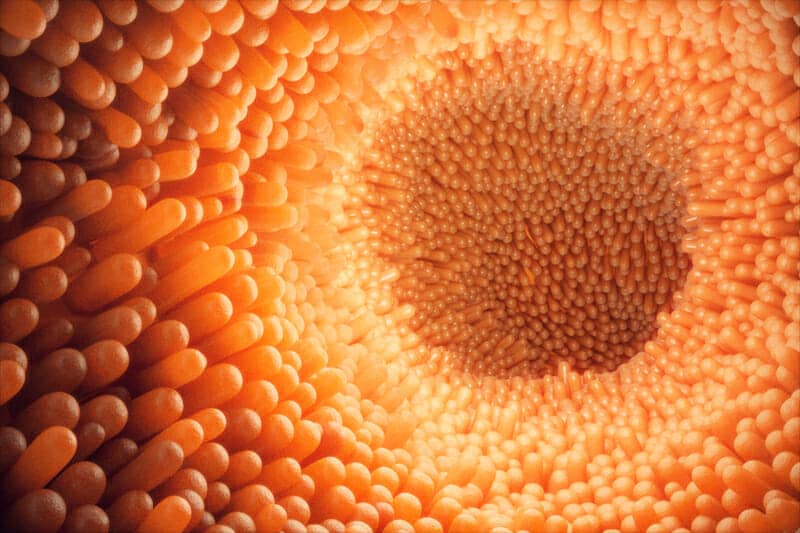
VIP is a 28-amino-acid peptide that is primarily produced in the hypothalamus, but many other tissues in the human body as well — immune cells, endocrine cells, the pancreas, and more (Source).
But unlike other peptides, it has numerous health benefits for several biological systems:
“Vasoactive intestinal peptide (VIP), a gut peptide hormone originally reported as a vasodilator in 1970, has multiple physiological and pathological effects on development, growth, and the control of neuronal, epithelial, and endocrine cell functions that in turn regulate ion secretion, nutrient absorption, gut motility, glycemic control, carcinogenesis, immune responses, and circadian rhythms.”
The same paper I quoted above provides a useful infographic highlighting the numerous functions of VIP:
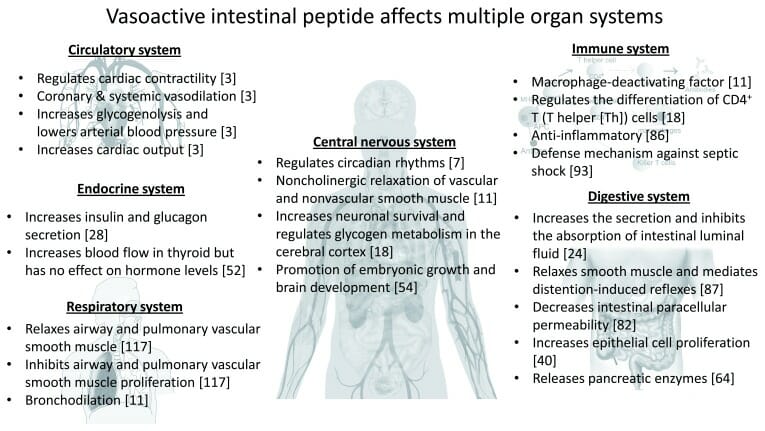
(Source)
Historically, VIP’s discovery goes all the way back to the 1960s when two scientists discovered a then-unknown molecule that dilates the blood vessels:
“In the late 1960s, Dr. Sami I. Said at the Medical College of Virginia reported that systemic injection of extracts of mammalian lungs produced generalized vasodilation and hypotension.
Together with Dr. Viktor Mutt from Karolinska University, Stockholm, Sweden, Dr. Said turned his search from the lung to duodenal extracts, which were more readily available, based on the premise that the same peptide might be present in other organs.
They soon discovered that peptide fractions from porcine duodenum indeed contained a component with vasodilatory activity, supporting Bayliss and Starling’s assumption (made in 1902 during their discovery of secretin) that a “vasodepressor principle” was present in intestinal extracts”
Even more interesting is how the amino acid sequence of VIP has 85% similarity across fish, frogs, humans, and virtually every mammal in existence!
Several years later, VIP was proven to be far more than a mere vasodilator… among other things, VIP is also a neuropeptide:
“… the presence of this peptide was demonstrated in different areas of the central and peripheral nervous system, such as the bodies, axons, and neuronal dendrites, as well as in presynaptic endings, resulting in the categorization of the VIP as a neuropeptide with neuromodulatory and neurotransmitter functions. This role was confirmed with the characterization of VIP receptors in numerous areas of the central nervous system (CNS).
In the immune system, the first information dates back to 1985, when Felten et al. described VIP-like immunoreactivity in the thymus nerve endings. Since then, VIP-ergic innervation in the spleen, lymph nodes, and mucosal-associated immune system has been demonstrated”
With so many roles being played at the same time, how precisely does VIP work in the human body?
VIP Peptide Mechanism of Action
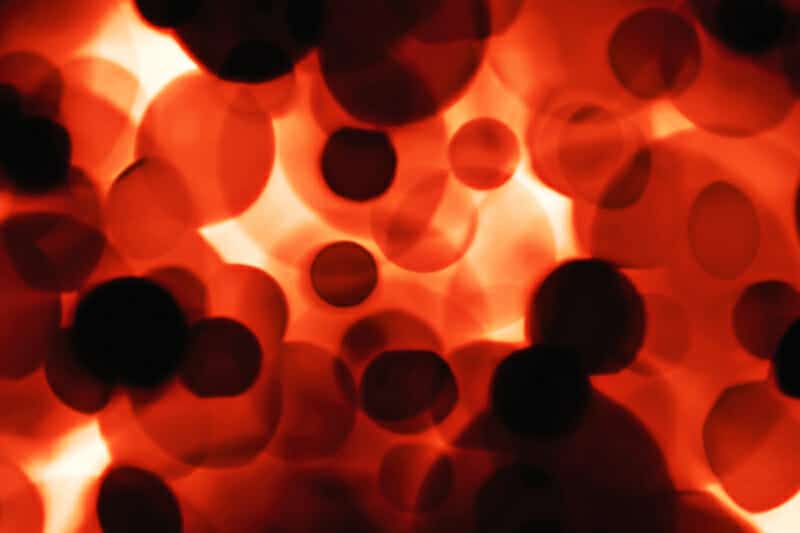
Due to VIP being so prevalent in the body, it is difficult to pinpoint its precise mechanism of action.
The only way to explain this is to give you a high-level overview, starting from the receptors it binds to:
“VIP appears to exert its effects by activating signaling processes involving VPAC1 [vasoactive intestinal peptide receptor type 1] and VPAC2 [vasoactive intestinal peptide receptor type 2] receptors, adenylyl cyclase, guanylyl cyclase, and potassium channels.
VIP immunoreactive nerve fibers originate from the central, peripheral, and intrinsic nervous systems and innervate blood vessels through out the body as well as the myocardium”
As you can imagine, this has a number of downstream effects:
“[VIP] acts on the HPA Axis: the “stress” axis of the hypothalamus, pituitary, and adrenal glands to regulate adrenal hormone production and release. This means everything downstream from the adrenals improves, including cortisol, DHEA (the precursor to sex hormones) and aldosterone, which regulates fluid volume in conjunction with ADH.” (Source)
“VIP stimulates prolactin secretion from the pituitary and catecholamine release from the adrenal medulla In the immune system, VIP regulates T cell traffic and inhibits mitogen-activated proliferation of T cells by inhibiting IL-2 production Other actions of VIP include stimulation of electrolyte secretion and protection against oxidant injury.” (Source)
Not to mention VPAC1 and VPAC2 are located in similar yet different areas of the body:
“Being one of the most abundant neuropeptides of the human body, VIP is highly expressed in the lung and also in the nasal mucosa. Regarding its receptors, VPAC1 is more abundant in the lung tissue and T-lymphocytes, whereas VPAC2 is essentially found in the smooth muscle, mast cells and the basal parts of the lung mucosa.” (Source)
“Both VPAC1R and VPAC2R are expressed in human airways: VPAC1R by bronchial epithelial cells, bronchial and vascular smooth muscle, and VPAC2R by bronchial epithelial cells and bronchial glands” (Source)
Keep in mind VIP is a VERY fast-acting molecule and has a very short half-life of roughly two minuutes, which explains why some chemists are desperately attempting to synthesize a more stable and longer-lasting version of VIP:
“After cessation of the VIP infusions, plasma VIP levels fell strikingly by first order kinetics with an average disappearance half-time of one minute. The apparent metabolic clearance rate was about 9 ml/kg/min and the apparent volume of distribution for VIP was approximately 14 ml/kg.
During infusion of the highest VIP dose, previously shown to induce one-fifth maximum pancreatic juice secretion, plasma concentrations of glucose, free fatty acids, and calcium were slightly but significantly raised, the pulse rate and the amplitude of blood pressure were increased, and cutaneous flushing occurred”
So any effects you experience, positive or negative, will be quite immediate in nature.
The YouTube video below is a quick 3-minute summary of the concepts explained in this section and the previous one:
VIP Peptide Benefits
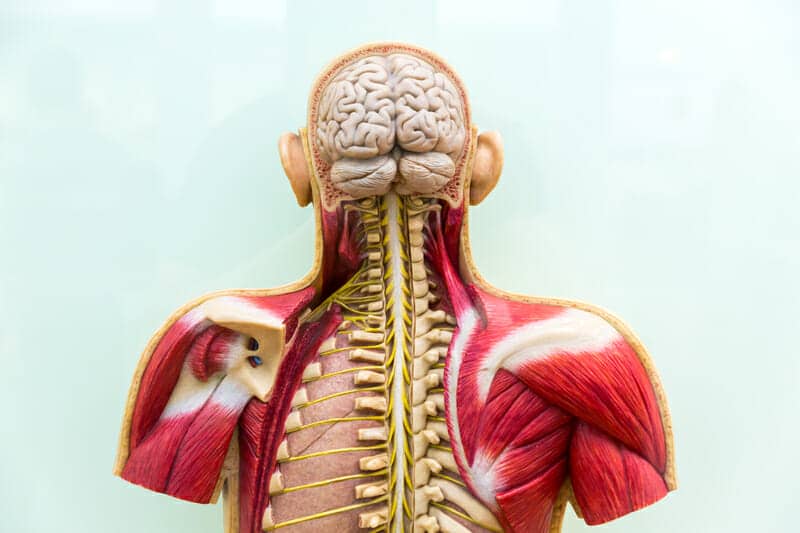
PubMed has just over 14,000 published studies on VIP since 1970… and I think this is very revealing to the peptide’s multi-functional role in the body across several biological systems.
Despite this, there’s still an awful lot of speculation about what it can do for human health.
And while some of VIP’s purported benefits include increased bile flow, vasodilation, glycogen and fat breakdown, and much more, it doesn’t tell us a whole lot about the benefits we can directly experience.https://www.youtube.com/watch?v=eM9I1gdgmsQ
So let’s see what the body of scientific research has to say!
Essential for Heart Health
VIP is essential for optimal cardiovascular health, according to a small study of 8 patients suffering from pulmonary hypertension:
“Consequently, the substitution with the hormone results in substantial improvement of hemodynamic and prognostic parameters of the disease without side effects. It decreased the mean pulmonary artery pressure in our eight study patients, increased cardiac output, and mixed venous oxygen saturation”
More studies in humans are needed, yet a 2001 review of multiple studies seems to be in line with the conclusion above:
“In research animals and in humans, VIP, administered into the coronary artery or intravenously, increases the epicardial coronary artery cross-sectional area, decreases coronary vascular resistance, and significantly increases coronary artery blood flow.
High frequency parasympathetic (vagal) nerve stimulation also releases endogenous VIP in the coronary vessels and heart and significantly increases coronary artery blood flow.
In addition, the release of VIP in the heart is increased during coronary artery occlusion and during reperfusion where VIP may promote local blood flow and may have a free-radical scavenging effect.
“…The presence and significant cardiovascular effects of VIP in the heart suggests that this peptide is important in the regulation of coronary blood flow, cardiac contraction, and heart rate. Current investigations are defining the physiological role of VIP in the regulation of cardiovascular function.”
The same review even suggested VIP may be more potent than norepinephrine at increasing heart rate!
A lot of this has to do with the regulation of autoimmune and inflammatory responses, which you’ll learn more about as you keep reading.
Anti-Inflammatory Effects
VIP’s anti-inflammatory properties have led to scientists investigating the peptide for treating other inflammation-related diseases:
“Its anti-inflammatory and anti-injury effects have been demonstrated at several sites and include inhibition of TNF-α and other pro-inflammatory cytokines, and suppression of nuclear transcription factor NFκB activation”
One possible way to explain this effect may have something to do with chemokine receptor regulation:
“We show that monocyte and CD4+ T cell responses to chemokines are inhibited by exposure to VIP through the VIP receptor type 1 (VPAC-1) receptor and that this is caused by chemokine receptor phosphorylation. VIP infusion in murine delayed-type hypersensitivity (DTH) results in deficient recruitment of monocytes and lymphocytes.
These data indicate that VIP trans-deactivates chemokine receptors and this anti-inflammatory function may serve as a model for novel therapies.”
There are likely multiple pathways involved, but fundamentally VIP’s role comes down to bodily homeostasis:
“Of obvious biological significance is the fact that the in vivo administration of VIP results in a similar pattern of cytokine modulation: reduction in the concentration of TNF-a, IL-6, IL-12 and NO; enhancement in the concentration of IL-10 in both serum and peritoneal fluid; and changes in TNF-a, IL-6, IL-10 and inducible NO synthase (iNOS) expression in peritoneal exudate cells”
The two educational videos below are a great visual description of how VIP is connected to your body’s level of inflammation:
Plays A Critical Role in Gut Health
Readers of Living A Fully Optimized Life are well-aware of the importance of a properly functioning gut for better health.
Well… turns out VIP is important for the regulation of your gut microbiota:
“The gut bacteria compositional changes observed in VIP–/– mice was consistent with gut microbial structure changes reported for certain inflammatory and autoimmune disorders.
Moreover, predicted functional changes by PICRUSt software suggested an energy surplus within the altered microbiota from VIP–/– mice.
These data support that VIP plays an important role in maintaining microbiota balance, biodiversity, and [gastrointestinal tract] function, and its genetic removal results in significant gut microbiota restructuring and weight loss.”
And VIP also maintains metabolic homeostasis through its involvement in the gut-brain axis:
“We fed rats standard or propionate-enriched diet for two weeks and we evaluated the activation of intestinal gluconeogenesis genes in response to these diets and to VIP signaling (i.e. exogenous VIP and VPAC1 receptor antagonist). Furthermore, we quantified VIP-positive neurons in the enteric nervous system in response to propionate feeding.
When injected with VIP, rats fed a control diet show an activation of intestinal gluconeogenesis genes. This activation was also present in propionate-fed rats but was reversed by VPAC1 receptor antagonist injection. VIP enteric submucosal neurons were also more numerous in propionate-fed rats”
Lastly, VIP has been used as a form of treatment in mice suffering from inflammatory bowel disease (IBD):
” In the current study, we demonstrate the therapeutic benefit of VIP-SSM over free peptide in reversing severe colitis associated with IBD.
…Similarly, VIP-SSM treatment significantly reduced the elevated mRNA levels of pro-inflammatory cytokines and showed significant histologic recovery when compared to mice treated with free VIP.
Therefore, these results demonstrated that as a single dose, the anti-inflammatory and antidiarrheal effects of VIP can be achieved effectively when administered as a nanomedicine.”
Not a benefit I would expect, but who’s going to complain about multiple positive health effects?
Can Treat Erectile Dysfunction (ED)
Believe it or not, this is the most studied benefit out of all the ones listed in this article.
But it’s not just VIP alone: It is combined with phentolamine (an agent that increases blood flow via expansion of blood vessels upon injection) to formulate Invicorp, which is currently under ownership by NeuroRx and also goes by the code name RLF-100.
(Unfortunately, it is marketed in the UK and Finland, however it has yet to arrive to the USA)
While VIP by itself may be enough to stimulate a full erection, some additional nervous stimulation is needed to get erect… hence the need for another agent.
Here’s how this dual-drug treatment works for men suffering from ED:
“Invicorp provides fixed doses of two agents with complementary mechanisms of action: aviptadil, a vasoactive intestinal polypeptide and phentolamine, a short-acting alpha-adrenoceptor antagonist.
Aviptadil has a potent effect on the veno-occlusive mechanism, but little effect on arterial inflow, whereas phentolamine increases arterial blood flow with no effect on the veno-occlusive mechanism. Both drugs cause smooth muscle relaxation of the corpus cavernosa which increases cavernosal artery blood flow, producing an erection”
Specifically, it is prescribed “for the symptomatic treatment of erectile dysfunction in adult males due to neurogenic, vasculogenic, psychogenic, or mixed aetiology as a second line agent for use in those who have failed on oral therapies (oral PDE5 inhibitors)” (Source)
And we have a surprising number of human studies vouching for its efficacy:
- 1990: While penile diameter and rigidity was increased, it was insufficient for vaginal intercourse
- 1999: Double-blind placebo-controlled trial with 183 men found 82% of men had a hard-enough erection for intercourse, 85-95% satisfaction rate with the drug, and 81% of patients reported improved quality of life
- 2007: Patients reported less pain with Invicorp than Alprostadil, even though both were effective for treating ED
- Review of studies: The combination of 25 mg VIP and 1-2 mg phentolamine for ED treatment was effective among the majority of papers reviewed.
It’s not all rainbow and sunshine: Invicorp is delivered as an intracavernosal injection, meaning you have to stick a needle in the spongy tissue of your penis.
As you can imagine, a treatment like this does have side effects: Flushing of the face, headache, dizziness, increased heart rate, and bruising around the injection site.
If you want to dive deeper into the clinical data, these two monographs (here and here) are a good starting point.
Possible Treatment Route for Various Types of Arthritis
VIP may play a modulating role in several types of arthritis, which is why more research is being poured into this specific use of the peptide.
We don’t understand everything about the connection between VIP and arthritis, but a few studies have dug up some interesting findings…
1. Osteoarthritis (OA)
Some biological studies propose that lower levels of VIP are connected to the pro-inflammatory response associated with osteoarthritis:
“The expression of VIP is down-regulated in synovial fluid of OA and down-regulation of VIP stimulates the production of pro-inflammatory cytokines that might contribute to the pathogenesis of OA by developing pain, joint inflammation and cartilage degradation”
However, a few contradictory studies do exist which claim the opposite:
“VIP is released into OA knee joints and subsequent accumulation of VIP in the joint down-regulates the VPAC receptor. Up-regulation of VIP increases the production of pro-inflammatory cytokines which in turn sensitizes afferent nerve fibres leading to the vascular dysfunction and degenerative changes in OA”
Like I said, this is still a new area of research.
2. Rheumatoid Arthritis (RA)
In the case of RA, it seems as if serum VIP levels could have a genetic component:
“We observed that patients with rs688136 CC genotype showed higher VIP levels in both discovery (n = 91; p = 0.033) and validation populations (n = 131; p = 0.007). This effect was attenuated by the presence of minor alleles rs35643203 and rs12201140, which showed a clear trend towards low VIP level association (p = 0.118 and p = 0.049, respectively).
….the identification of polymorphisms associated with VIP serum levels would complement the clinical assessment of the disease severity in rheumatoid arthritis patients.”
For this reason, VIP is being examined as an early diagnostic biomarker for the development of RA:
“Disease activity, which was assessed using DAS28, inversely correlated with VIP levels. After a two-year follow-up, those patients with low baseline levels of VIP displayed higher disease activity and received more intensive treatment.
“Patients who are unable to up-regulate VIP seem to have a worse clinical course despite receiving more intense treatment. Therefore, measurement of VIP levels may be suitable as a prognostic biomarker.”
One possible mechanism to explain the above results is as follows:
“This “neuroimmunopeptide” modulates the pathogenic activity of diverse cell subpopulations involved in RA as lymphocytes, fibroblast-like synoviocytes (FLS), or macrophages. In addition, VIP decreases the expression of pattern recognition receptor (PRR) such as toll-like receptors (TLRs) in FLS from RA patients.
These receptors act as sensors of pathogen-associated molecular pattern (PAMP) and damage-associated molecular pattern (DAMP) connecting the innate and adaptive immune system.
Moreover, VIP modulates the imbalance between Th subsets in RA, decreasing pathogenic Th1 and Th17 subsets and favoring Th2 or Treg profile during the differentiation/polarization of naïve or memory Th cells. Finally, VIP regulates the plasticity between theses subsets”
Hopefully we can see more progress on this domain in the near future.
Plays a Critical Role Respiratory Problems Such as Chronic Obstructive Pulmonary Disease (COPD)
Let’s get something straight about VIP: OPTIMAL levels of this peptide are key to excellent health, meaning neither too high nor too low.
In fact, higher serum levels of VIP are associated with acute exacerbated COPD.
And in case you don’t know what COPD is:
“Chronic obstructive pulmonary disease, commonly referred to as COPD, is a group of progressive lung diseases.
The most common of these diseases are emphysema and chronic bronchitis. Many people with COPD have both of these conditions.
Emphysema slowly destroys air sacs in your lungs, which interferes with outward air flow. Bronchitis causes inflammation and narrowing of the bronchial tubes, which allows mucus to build up.
It’s estimated that about 30 million people in the United States have COPD. As many as half are unaware that they have it.
Untreated, COPD can lead to a faster progression of disease, heart problems, and worsening respiratory infections.”
Two small studies in humans already demonstrate how using VIP could be used to help patients suffering from respiratory problems.
The first study involves the use of inhaled VIP (via aerosol) in 20 patients diagnosed with pulmonary arterial hypertension (PAH) who were given a 100mcg dose of VIP:
“Aviptadil aerosol caused a small and temporary but significant selective pulmonary vasodilation, an improved stroke volume and mixed venous oxygen saturation. Overall, six patients experienced a pulmonary vascular resistance reduction of >20%. In patients with significant lung disease, aviptadil tended to improve oxygenation.
The pulmonary vasodilating effect of aviptadil aerosol was modest and short-lived, did not cause any side-effects and led to a reduced workload of the right ventricle without affecting systemic blood pressure. Aviptadil inhalation tended to improve oxygenation in patients with significant lung disease.”
The second study recruited 34 COPD patients receiving 200mcg of VIP over the course of 3-6 months, and overall quality-of-life was evaluated:
“The 6 minute walking distance (6MWD) showed a statistically significant increase from baseline to month 6 (464.7 ± 97.6 m vs. 491.5 ± 110.7 m, p<0.05), whereas the maximum performance in [spiroergometry] did not change.
Quality of life assessment at baseline and month 6 showed a significant improvement in the [St. George’s Respiratory Questionnaire] total score (45.2 ± 16.3 vs. 37.8 ±17.8, p<0.05), and a tendency towards improvement in the SF-36 mental component summary (45.0 ± 9.6 vs. 50.0 ± 13.2, p=0.067). No severe side effects were observed.
CONCLUSION: The preliminary data of the VIP/COPD-trial confirm our previous results, demonstrating a positive impact of VIP on exercise capacity and quality of life in patients with COPD.”
But as you’ll note in both studies, using VIP itself does come with some practical limitations:
“Clinical application of VIP has been limited in the past for a number of reasons, including its short plasma half-life and difficulty in administration routes. The development of long-acting VIP analogues, in combination with appropriate drug delivery systems, may provide clinically useful agents for the treatment of PAH, asthma, and COPD”
“…Firstly, VIP is degraded quickly by enzymes, catalytic antibodies, and spontaneous hydrolysis in biological fluids. Secondly, systemic administration of VIP has been shown to cause cardiovascular side effects”
Since then, VIP analogues are currently in development to improve the peptide’s metabolic stability, half-life and lowered chance of manifesting side effects.
Could Enhance Immune System Strength
VIP plays a pivotal role in both natural immunity (i.e. immediate prevention of foreign pathogens moving throughout the body) and adaptive immunity (i.e. specific to a given pathogen), according to a 2004 review:
- Innate – stimulates phagocytosis, activation of macrophages, modulating the expression of chemokines
- Adaptive – activation of naive T cells, differentiation of CD4+ T cells, restores Th1/Th2 balance
Since then, VIP has been implicated in several autoimmune diseases such as:
- Type 1 Diabetes
- Grave’s Disease
- Dysregulation of immune system homeostasis
- Acute myocarditis
- Multiple sclerosis
May Have Neuroprotective Properties
Back in 2003, a mouse study discovered that VIP can be useful in the fight against age-related neurodegeneration:
“VIP treatment significantly decreases MPTP-induced dopaminergic neuronal loss in SNpc and nigrostriatal nerve-fiber loss. VIP prevents MPTP-induced activation of microglia in SNpc and striatum and the expression of the cytotoxic mediators, iNOS, interleukin 1β, and numor necrosis factor α.
VIP emerges as a potential valuable neuroprotective agent for the treatment of pathologic conditions in the central nervous system, such as [Parkinson’s Disease], where inflammation-induced neurodegeneration occurs.”
Put another way, VIP could be responsible for the lowered neuronal loss.
Yet many more studies published since then have discovered multiple pathways through which VIP may be neuroprotective:
- Preventing neuronal cell death in disease states such as Alzheimer’s disease
- Restoring grey matter nuclear atrophy
- Involved in axonal regrowth
- Unregulated VIP levels are associated with autism and Down syndrome, while VIP production is an important part of normal embryo development
- VIP’s antioxidant properties may assist in combating “oxidative stress resulting from mitochondrial dysfunction” (Source)
Not exactly a nootropic like Modafinil, but a useful adjuvant for older-aged individuals concerned about their long-term cognitive health.
Has Been Successfully Used in Patients with Chronic Mold Exposure
This is not something you will hear about in mainstream medicine… yet it is very popular among naturopaths and physicians using unconventional forms of treatment.
The use for VIP in mold illness was popularized by Dr. Ritchie Shoemaker, who uses the peptide as one of the last therapeutics in a comprehensive 11-step protocol he devised himself.
However, evidence supporting this use is limited and comes from a study performed by Dr. Shoemaker himself:
“Here we report an open label trial of 20 patients with refractory CIRS-WDB illness who took replacement VIP in a nasal spray for at least 18 months with confirmation of durable efficacy and absence of significant side effects”
“The trial showed that VIP therapy safely 1) reduced refractory symptoms to equal controls; 2) corrected inflammatory parameters C4a, TGF beta-1, VEGF, MMP9; 3) corrected estradiol, testosterone and 25-OH Vitamin D; 4) returned pulmonary artery systolic pressure (PASP) during exercise to normal; and 5) enhanced quality of life in 100% of trial patients.
Subsequent identification of correction of T-regulatory cell levels supports the potential role of VIP in both innate and adaptive immune function.”
Dr. Raj Patel has endorsed the use of VIP in mold illness alongside its pre-established use for Lyme disease, noting why and how VIP appears to work so well:
“The last 30% of healing doesn’t happen until the damage that has been left behind by the chronic infections and accompanying inflammation has been addressed. Such people will typically still have Leaky Gut Syndrome and food intolerances, as well as persistent signs of endocrine, or hormonal dysfunction, as evidenced by chronically low levels of MSH, melatonin, testosterone, and adrenal hormones.
VIP helps to repair the hypothalamic-pituitary-adrenal axis. When this happens, the body starts to produce adrenal hormones normally. People can also see their testosterone levels rise to normal; their vitamin D metabolism improves, and the lining of their gut starts healing. VIP also helps in raising melatonin levels. It has far-reaching effects and turns on hundreds of gene systems involved in repair and restoration.
…[patients] start to see improvements in all of their symptoms; their energy improves, they sleep better and they start gaining the energy reserve back that they used to have—it really is quite remarkable.”
Something worth considering for people who suffer from this specific type of biotoxin illness!
Shows Potential Promise for Treating Other Health Conditions
VIP has been explored for the treatment of several disease states not mentioned above… there’s not enough evidence to justify these specific use cases but I will nevertheless include them for the sake of completion:
- Regulation of your circadian system (here, here)
- May help improve the odds of success with eye surgery (likely via increased blood flow)
- Possibly therapeutic in the treatment of diabetes
- Early results show VIP administration could help with Crohn’s Disease
- Involved in appetite regulation and body mass composition
- Promotes skull defect repair in rats
But there’s one possible benefit worth mentioning, even though you won’t see it today
Early on in the COVID-19 pandemic, VIP was strongly considered as a frontline treatment… even back in 1999, researchers were looking into VIP (specifically the Avaptidil formulation) for treating acute respiratory distress syndrome (ARDS).
VIP also showed the same results when ARDS was present as a result of sepsis.
But during the height of the pandemic in 2020, promising results were already coming in:
- Potentially superior to remdesivir for treating symptoms (a head-to-head study comparing the two is currently underway as of this writing)
- “Five phase 2 trials of aviptadil… [involving] numerous healthy volunteer studies have shown that i.v. infusion of Aviptadil is well tolerated with few adverse effects including alterations in blood pressure, heart rate” (Source)
As of this writing, Avaptidil is in Phase 2/3 studies for treating ARDS in COVID-19, along with COVID-19 infection with/without respiratory failure.
One mechanism of action to explain these results involves the binding of VIP “to receptors on Alveolar Type II cells in the lung, the same cells that bind the SARS-CoV-2 virus via their ACE2 receptors” (Source).
Other possible pathways could involve “blocked replication of the SARS-CoV-2 virus in human lung cells and monocytes [and] preventing synthesis of cytokines in the lung” (Source)
Unfortunately, VIP failed to get Emergency Use Authorization due to the initial application having only 21 patients in the total sample size (this was not a final decision, but rather an indication that more data is needed by the FDA).
And not surprisingly, Relief Therapeutics – the company holding the patent to Avaptidil – saw its share prices crash shortly after the FDA announced its rejection.
So here’s where Avaptidil currently stands in May 2021 with respect to being considered as a COVID-19 treatment…
First, a newly published 60-day study examining 196 patients in a randomized, double-blinded multicenter clinical trial examining recovery from COVID-19 and overall survival:
“…patients had a 71% chance of successful recovery by day 28 vs. 48% in the placebo group (P = .017) and a 75% rate of successful recovery by day 60 vs. 55% in the placebo group (P = .036). Eighty-four percent (84%) of HFNC [High Flow Nasal Cannula] patients treated at tertiary medical centers with ZYESAMI™ [aviptadil acetate] survived to day 60 compared with 60% of those treated with placebo (P = .007).
Second, ongoing clinical trials in Georgia and Switzerland for the hopeful use of VIP in treating ARDS brought on by SARS-CoV-2.
NOTE: This is NOT an endorsement of VIP as a way to treat or cure COVID-19. I am simply listing this use here for your information.
VIP Nasal Spray Dosage
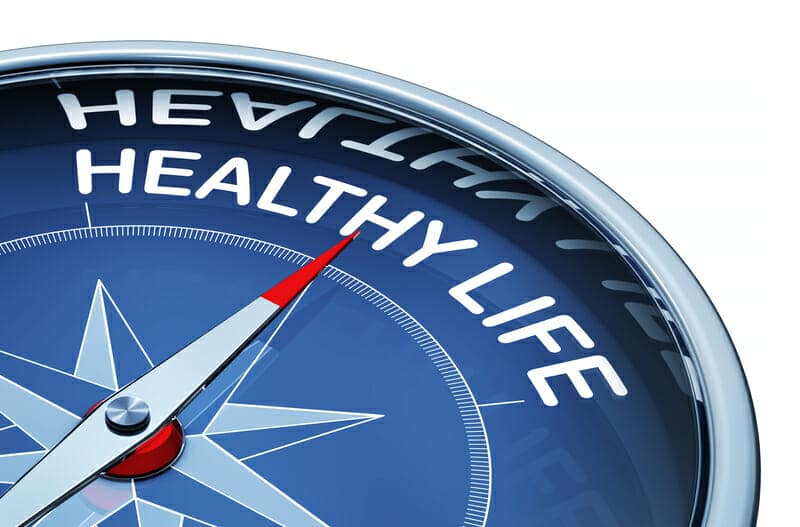
Sadly, we do not have a universal dosing protocol in existence for VIP.
Combined with its limited use in humans and its extremely broad spectrum of biological effects, it’s hard to give a blanket recommendation.
The standard protocol for administering VIP seems to be 50 mcg sprayed intra nasally within each nostril up to 4 times per day for a total of 30-90 days (with the goal of gradually reducing the dose to zero).
However, this VIP dosing regimen is primarily used to treat mold-induced toxicity and chronic inflammatory response syndrome (CIRS).
In this context, the dosing instructions are a bit more specific:
“Duration of treatment with VIP nasal spray varies considerably, with timeframes ranging from 30 days to indefinitely. Dosage range can also vary from 1 spray to 16 sprays per day for adults. Paediatric patients will also likely require this final step in the Shoemaker Protocol but use a reduced dosage for a shorter time.
A starter dose for very unwell and sensitive adults or paediatric patients can be as low as 50mcg per spray. Some adults have not recovered to pre-CIRS health until utilising 2000mcg per spray. So dosages vary enormously and must be tailor made to your individual circumstances.”
(BTW – here are some preparation and storage recommendations you should be mindful of before using VIP)
While some functional medicine physicians claim VIP can be used safely alongside peptides such as BPC-157, I do not have the experience nor do I know anybody who has tried this.
Biohackers claim better results with a subcutaneous injection instead of an intranasal spray, but I also don’t have the knowledge to confirm this.
Therefore, you are entirely on your own to experiment and determine how much VIP you should be using and how often to use it.
VIP Nasal Spray Side Effects

As we’ve seen thus far, VIP appears to have an excellent safety profile with a very low incidence of side effects… and when they do happen, they are mild in nature and very easy to treat.
It is extremely well-tolerated, with the maximum dose being MANY orders of magnitude above the recommendation of knowledgeable physicians:
“[VIP] at a dose of 1546 µg/kg/day is well tolerated and produces no apparent changes in any of the parameters evaluated. No changes are observed after a single dose administration as high as 3920 µg/kg/day.
The no-observable-adverse-effect level (NOAEL) is considered to be at least 3920 µg/kg/day fore an acute exposure and 1546 µg/kg/day for a 10 day repeated exposure”
Some of the most commonly reported side effects of VIP reported by physicians include:
- Low blood pressure
- Rashes
- Dizziness
- “May not work”
- Palpitations and irritability
- Headaches and migraines (although not everybody agrees)
However, I should note it is possible to have too much VIP production in your body, which leads to the diagnosis of a rare endocrine tumor known as “VIPoma”
“Normal [blood lab] values should be less than 70 pg/mL (20.7 pmol/L).
People with VIP-secreting tumors usually have values 3 to 10 times above the normal range.”
VIPoma is one of the more straight-forward tumors in existence, so its description is quite easy to explain:
“The majority of VIPomas arise within the pancreas, and are classified as functioning pancreatic neuroendocrine (islet cell) tumors. In adults, VIPomas are intrapancreatic in over 95 percent of cases. However, other VIP-secreting tumors have been reported, including lung cancer”
“The VIPoma syndrome is caused by excessive, unregulated secretion of vasoactive intestinal polypeptide (VIP) by the tumor. However, other substances, such as prostaglandin E2, may occasionally be secreted by the tumors”
But you don’t need to worry about VIPoma, as it is very rare to come by and comes with a unique list of distinctive symptoms:
“VIP-producing tumors (VIPomas) are rare; most (90%) are located in the pancreas. Watery diarrhea, hypokalemia, and achlorhydria are key symptoms [along with weight loss, flushing of the skin, dehydration, low potassium levels, and abdominal pain.”
I want to emphasize the word “rare”:
“VIPomas are often diagnosed in adults, most commonly around age 50. Women are more likely to be affected than men.
This cancer is rare. Each year, only about 1 in 10 million people are diagnosed with a VIPoma.“
However, VIP shows promise in treating certain types of cancer such as small lung cell cancer… so its role in cancer as a whole is still widely misunderstood.
If you really want to read up on VIPoma, there are several well-detailed reviews detailing its manifestation and various treatment routes (here, here, and here).
But common sense and self-responsibility should keep you far away from VIPoma becoming something you have to worry about.
DISCLAIMER: I have not personally tested this peptide myself, so it is 100% up to you to decide whether using VIP is right for you.
Where to Buy Vasoactive Intestinal Peptide
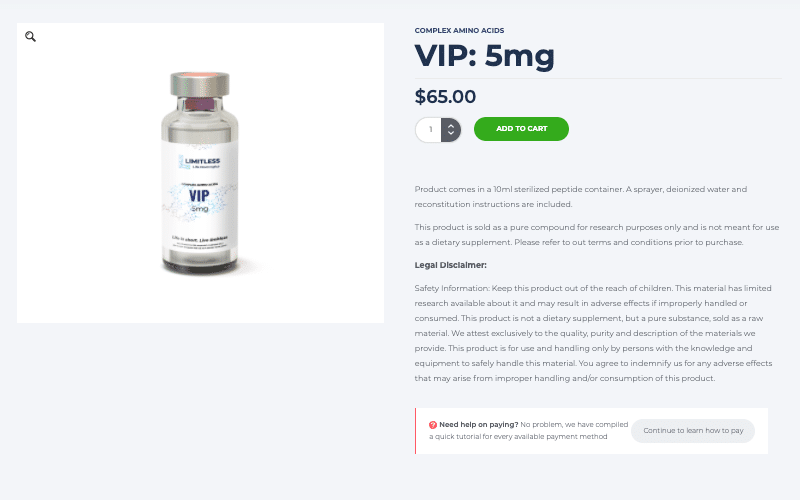
As with every single peptide I write about and recommend to my readers, Limitless Life Nootropics is where you want to go for sourcing REAL, pharmaceutical-grade VIP.
Use code JAY15 to get 15% off your order!
However, there are a few things you should know about…
First, like many other suppressed peptides facing the wrath of the “alphabet” health organizations, VIP is was removed from the FDA’s compounding list in 2019.
So if VIP is something you feel is right for you and your health ailment(s), now is the time to stack up before something happens.
Second, you will see the following statement on VIP’s product page:
“Product comes in a 10ml sterilized peptide container. A sprayer, deionized water and reconstitution instructions are included.”
You are responsible for the reconstitution of the VIP peptide into the nasal spray solution commonly used by physicians.
If you have any questions about how to do this or want more information about precise dosing instructions, email the founder of Limitless Life Nootropics at [email protected].
I know Chris personally and have interviewed him on my blog before — an outstanding human being who knows peptides as well as any vendor on the market.
You won’t go wrong with his recommendations!
Additional Reading Resources For Vasoactive Intestinal Peptide

Despite VIP’s existence of just over 50 years, there’s not an awful lot of information about the use of this extraordinary peptide in humans for therapeutic or health optimization purposes.
With this being said, here are some valuable links to save if you want to explore the peptide beyond the scope of this article:
SelfHacked and Dr. Jill Carnahan wrote great articles detailing all the ways in which you can naturally increase your body’s production of VIP (which ultimately comes down to living a fully optimized lifestyle)
UKEssays has arguably the most detailed write-up of VIP on the Internet outside of my own, including the peptide’s pharmacology and the challenges behind using the peptide for therapeutic purposes.
Medicine With Heart lists additional uses for VIP, such as treating depression and select food allergies
And as always…
Raise Your Vibration To Optimize Your Love Creation!
PS – When you’re ready to learn how to use peptides at a much deeper level, you have three options.
- You can set up a private One on One Call with me.
- You can join the Fully Optimized Health where we discuss these kinds of things every week on Wednesday Nights at 6PM PST.
- Joining a Monthly Mastermind with two 60 Minute Group Coaching Calls with Me and Daniel Kelly Discussing Fully Optimized Living including Peptides, Hormones, Gray Market Agents, Performance Enhancement and much more. (The Link is coming in the next few days). Email [email protected] with “Monthly Mastermind” in the subject line.



